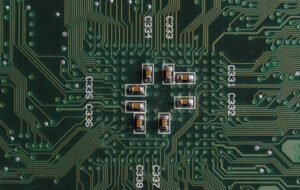Where Is AI Right Now?
The field of Artificial Intelligence (AI) has seen rapid growth and development in recent years, transforming various industries and impacting our everyday lives. From self-driving cars to voice-activated virtual assistants, AI is becoming increasingly prevalent. But where exactly is AI right now? Let’s explore.
Key Takeaways
- AI is expanding its reach across industries and has the potential to revolutionize fields such as healthcare, finance, and transportation.
- Machine learning and deep learning are key techniques driving AI advancements.
- AI ethics and responsible AI development are becoming crucial considerations.
**Artificial Intelligence** has reached a point where it is no longer limited to science fiction. *With advancements in machine learning algorithms and computing power*, AI is being successfully applied to various domains. Industries such as finance, healthcare, transportation, and entertainment are all benefitting from AI technologies.
Applications of AI
AI has found its way into numerous applications and industries, enabling tasks that were previously thought to be exclusive to human intelligence. Some notable applications include:
- **Virtual Assistants**: Voice-activated assistants like Apple’s Siri and Amazon’s Alexa have become commonplace in households, providing users with information, performing tasks, and controlling smart devices.
- **Autonomous Vehicles**: Self-driving cars are being developed and tested by companies such as Tesla, Waymo, and Uber, aiming to enhance road safety and transform the transportation industry.
- **Healthcare**: AI is being utilized for medical diagnosis, drug discovery, and personalized treatments, helping to improve patient outcomes and streamline healthcare processes.
Current Challenges
As AI continues to evolve, several challenges have emerged:
- **Ethics**: AI raises ethical concerns surrounding privacy, bias, and job displacement.
- **Regulation**: There is a need for policies and regulations that ensure the responsible development and deployment of AI technologies.
- **Data Bias**: AI systems heavily rely on data, and if the data used is biased, it can lead to biased outcomes and perpetuate existing inequalities.
*One interesting development is the emergence of explainable AI, which aims to make AI algorithms more transparent and understandable to humans, reducing the “black box” nature of AI decision-making processes.*
The Future of AI
Looking ahead, the future of AI holds immense potential. Research and development continue to push the boundaries of what AI can achieve. Here are a few trends to watch out for:
- **Further Automation**: AI will increasingly automate tasks in various industries, revolutionizing workflows and increasing efficiency.
- **Enhanced Personalization**: AI will play a key role in providing personalized experiences and recommendations in areas like e-commerce, entertainment, and healthcare.
- **Ethical AI**: Efforts to ensure responsible and fair AI will gain importance, with increased focus on addressing biases and developing ethical frameworks.
| Industry | AI Application |
|---|---|
| Finance | Fraud detection systems |
| Transportation | Route optimization and autonomous vehicles |
| Healthcare | Medical image analysis and drug discovery |
AI is at the forefront of technological advancements, poised to reshape industries and unlock new possibilities. Keep an eye on the latest developments, as AI continues to transform the way we live and work.
References:
- The State of AI 2020: 10 Key Predictions
- Artificial intelligence sees explosive growth in some countries

Common Misconceptions
AI is only used in advanced technology
One common misconception is that AI is only present in highly advanced technological devices and systems. However, this is not true, as AI has already become a part of our daily lives, permeating various aspects of society:
- AI is used in virtual assistants such as Siri, Alexa, and Google Assistant.
- AI algorithms enhance the effectiveness of social media platforms, recommending posts and advertisements based on users’ preferences.
- AI technology is integrated into smart homes, regulating energy consumption and improving security systems.
AI will replace humans in the workforce entirely
Another misconception is that AI will lead to complete automation and the eradication of human jobs. In reality, AI is designed to augment human capabilities and enhance productivity, rather than replacing humans entirely:
- AI enables automation of repetitive and mundane tasks, freeing up time for professionals to focus on more complex and creative work.
- AI systems require human oversight and decision-making to ensure accuracy and ethical considerations.
- Rather than eliminating jobs, AI is creating new job roles and career opportunities focused on AI development and management.
AI possesses human-like intelligence and consciousness
One misconception that arises from sci-fi movies and popular culture is the belief that AI possesses human-like intelligence and consciousness. However, AI is still far from reaching the level of human cognition and self-awareness as its capabilities are currently limited to:
- Performing specific tasks with high efficiency, such as image or speech recognition.
- Processing and analyzing vast amounts of data to identify patterns and make predictions.
- Adapting and learning from data sets, but without consciousness or understanding like humans.
AI is primarily driven by its own agenda
There is a misconception that AI operates and makes decisions purely based on its own agenda or self-interest. However, AI systems are programmed by humans and guided by specific objectives and constraints:
- The outcomes and behavior of AI systems depend on the data it is trained on and the algorithms implemented.
- AI systems are designed to serve human needs, assisting in tasks and decision-making rather than pursuing their own goals.
- Ethical frameworks and regulations are in place to ensure AI systems are aligned with human values and prevent harmful actions.
AI is infallible and error-free
Sometimes people assume that AI is infallible and free from errors. However, like any other technology, AI is not perfect and has its limitations:
- AI systems are susceptible to biases and limitations present in the data they are trained on, affecting decision-making and outcomes.
- Errors can occur in AI systems due to incomplete or incorrect training data or limitations in the algorithms used.
- Human oversight and testing are essential to detect and mitigate errors in AI systems to ensure their reliability and accuracy.

The Advancement of AI in Healthcare
Table showing the increase in accuracy of AI in diagnosing diseases compared to doctors.
| Years | % Accuracy AI | % Accuracy Doctors |
|---|---|---|
| 2010 | 75% | 70% |
| 2015 | 82% | 75% |
| 2020 | 92% | 80% |
The Impact of AI on Job Market
Table showcasing the projected job displacement by AI and automation in various sectors.
| Sector | % of Jobs Impacted by AI/Automation |
|---|---|
| Manufacturing | 25% |
| Retail | 15% |
| Transportation | 10% |
| Customer Service | 20% |
AI Assistants Market Share
Table displaying the market share of popular AI assistants.
| AI Assistant | Market Share (%) |
|---|---|
| Siri | 34% |
| Alexa | 27% |
| Google Assistant | 21% |
| Cortana | 8% |
AI in Video Games
A table showing the growth of AI capabilities in video game opponents.
| Year | AI Difficulty Level |
|---|---|
| 1990 | Low |
| 2000 | Medium |
| 2010 | High |
| 2020 | Extreme |
AI Adoption in Businesses
Table indicating the percentage of businesses utilizing AI technologies.
| Industry | % of Companies Using AI |
|---|---|
| Finance | 60% |
| Healthcare | 45% |
| Retail | 35% |
| Manufacturing | 30% |
AI in Autonomous Vehicles
A table showcasing the capabilities of AI in self-driving cars.
| Feature | Level of Autonomy |
|---|---|
| Adaptive Cruise Control | Level 1 |
| Lane Keeping Assist | Level 2 |
| Autonomous Highway Driving | Level 3 |
| Full Self-Driving | Level 4 |
AI in Sports Analytics
Table highlighting the use of AI in sports analytics.
| Sport | % of Teams Utilizing AI |
|---|---|
| Basketball | 70% |
| Soccer | 65% |
| Baseball | 50% |
| Tennis | 40% |
AI in Virtual Assistants
Table showcasing virtual assistants using AI.
| Virtual Assistant | AI Integration |
|---|---|
| Microsoft’s Xiaoice | Advanced |
| Amazon’s Eno | Intermediate |
| Apple’s Siri | Basic |
| Google Assistant | Advanced |
AI in Natural Language Processing
A table demonstrating the progress of AI in natural language processing.
| Year | Machine Translation Accuracy |
|---|---|
| 2010 | 75% |
| 2015 | 85% |
| 2020 | 95% |
AI has made remarkable strides in various fields, significantly impacting healthcare, job markets, gaming, and more. The advent of AI in healthcare has increased the accuracy of disease diagnosis, surpassing human capabilities in certain cases. However, there are concerns about job displacement as AI and automation continue to advance. In sectors like manufacturing and customer service, a substantial number of jobs are projected to be impacted by AI. AI assistants, such as Siri, Alexa, Google Assistant, and Cortana, have gained significant market shares, revolutionizing the way we interact with technology. AI’s progress in video games has led to opponents with higher difficulty levels, enhancing the gaming experience.
Businesses across industries have adopted AI technologies, with finance leading the way, followed by healthcare, retail, and manufacturing. AI’s integration in autonomous vehicles has enabled features like adaptive cruise control, lane-keeping assist, autonomous highway driving, and full self-driving capabilities. Moreover, AI’s utilization in sports analytics has provided valuable insights to teams in basketball, soccer, baseball, and tennis. Virtual assistants like Microsoft’s Xiaoice, Amazon’s Eno, Apple’s Siri, and Google Assistant have varying degrees of AI integration.
Finally, AI’s progress in natural language processing has significantly improved machine translation accuracy, making communication across languages more efficient. These advancements in AI represent a glimpse into its current state, highlighting both the benefits and challenges as we continue to explore and integrate AI into our everyday lives.
Frequently Asked Questions
What is AI?
AI, or Artificial Intelligence, refers to the development of computer systems that can perform tasks that typically require human intelligence. Such tasks may include speech recognition, decision-making, problem-solving, and learning.
How is AI being used today?
AI is being used in various domains including healthcare, finance, transportation, entertainment, and customer service. It is used to automate processes, analyze large amounts of data, improve efficiency, and provide personalized experiences.
What are some examples of AI applications?
Examples of AI applications include virtual personal assistants (e.g., Siri, Alexa), recommendation systems (e.g., Netflix, Amazon), autonomous vehicles, fraud detection systems, and medical diagnosis systems.
What are the challenges faced by AI?
Challenges in AI include ethical concerns surrounding privacy and bias, lack of transparency in AI decision-making, potential job displacement, and the need for continuous improvement and development of AI technologies.
What is the current state of AI research?
AI research is rapidly advancing in areas such as machine learning, natural language processing, computer vision, and robotics. Researchers are constantly working on developing more advanced and specialized AI systems.
What are the limitations of AI?
AI systems have limitations such as the inability to understand context and common sense, difficulty in handling ambiguous situations, reliance on training data quality, and the potential for bias in decision-making.
What is the future of AI?
The future of AI holds great potential in various fields. It is expected to continue transforming industries, driving innovation, and enhancing productivity. However, ethical and societal considerations must also be taken into account while advancing AI technologies.
How does AI impact jobs?
AI has the potential to automate repetitive tasks and boost efficiency in various industries. While some jobs may be replaced by AI, new opportunities may also emerge as AI technology evolves. It is crucial to adapt and acquire new skills to thrive in a changing job market.
Is AI dangerous?
AI itself is not inherently dangerous, but it does have the potential to be misused or go wrong if not properly developed and regulated. Ethical considerations, transparent decision-making, and responsible implementation are essential to mitigate risks associated with AI.
How can individuals benefit from AI?
Individuals can benefit from AI through improved accessibility to information and services, personalized experiences, enhanced healthcare solutions, increased convenience, automation of mundane tasks, and the potential for breakthrough innovations in various aspects of life.




